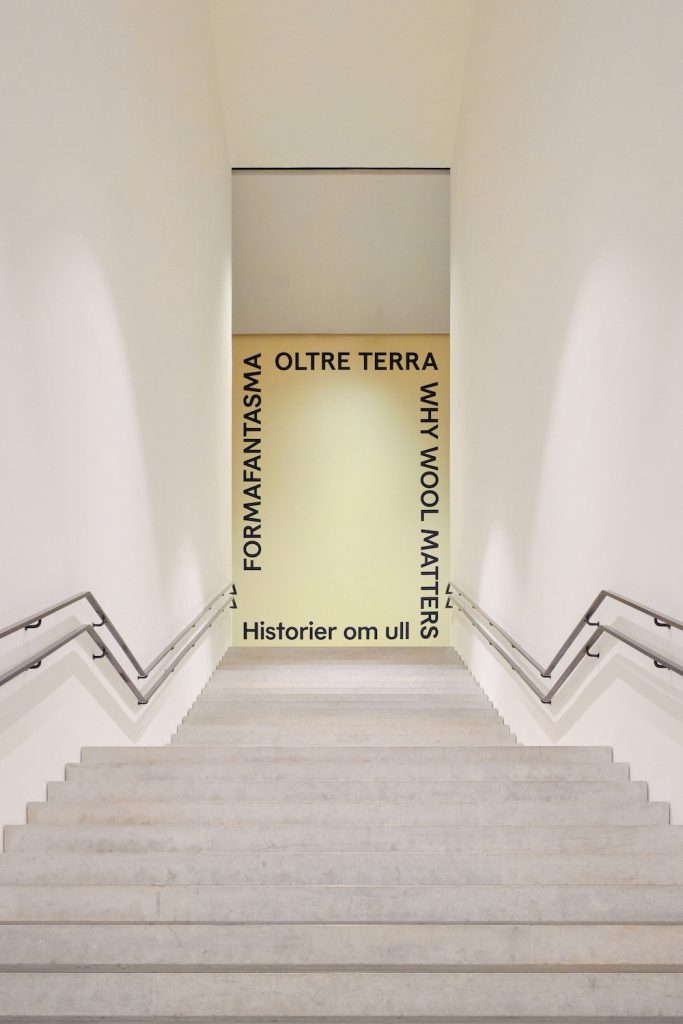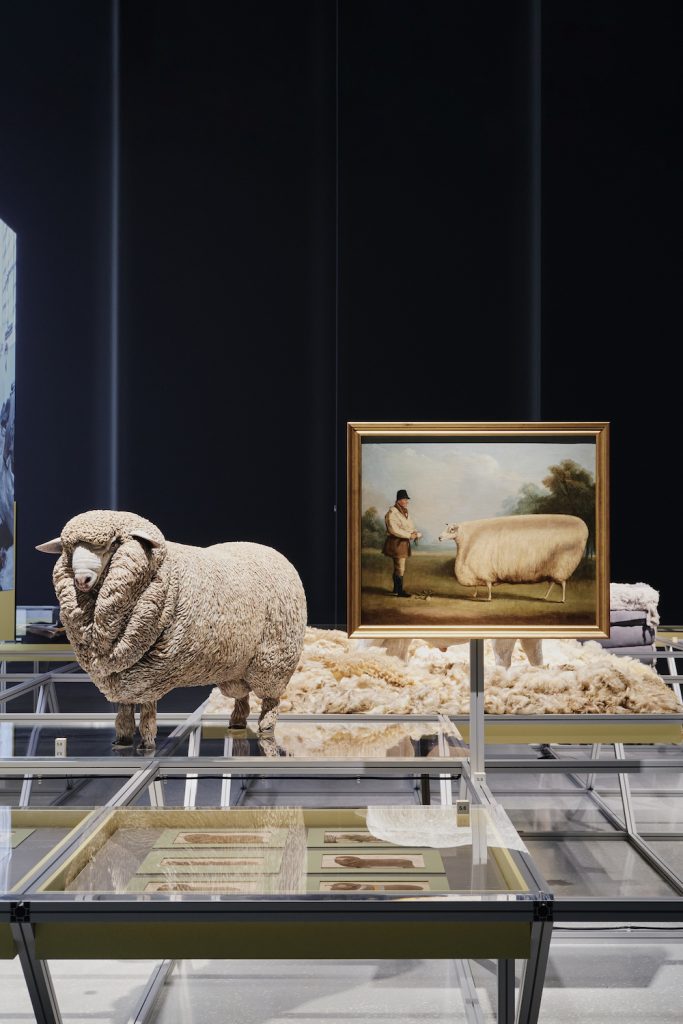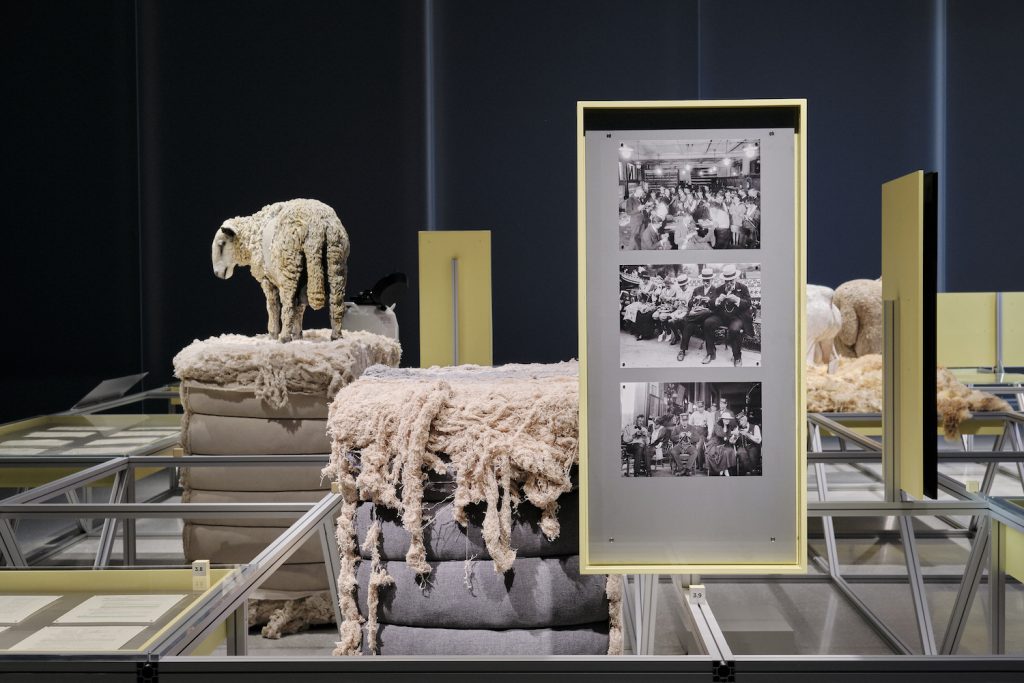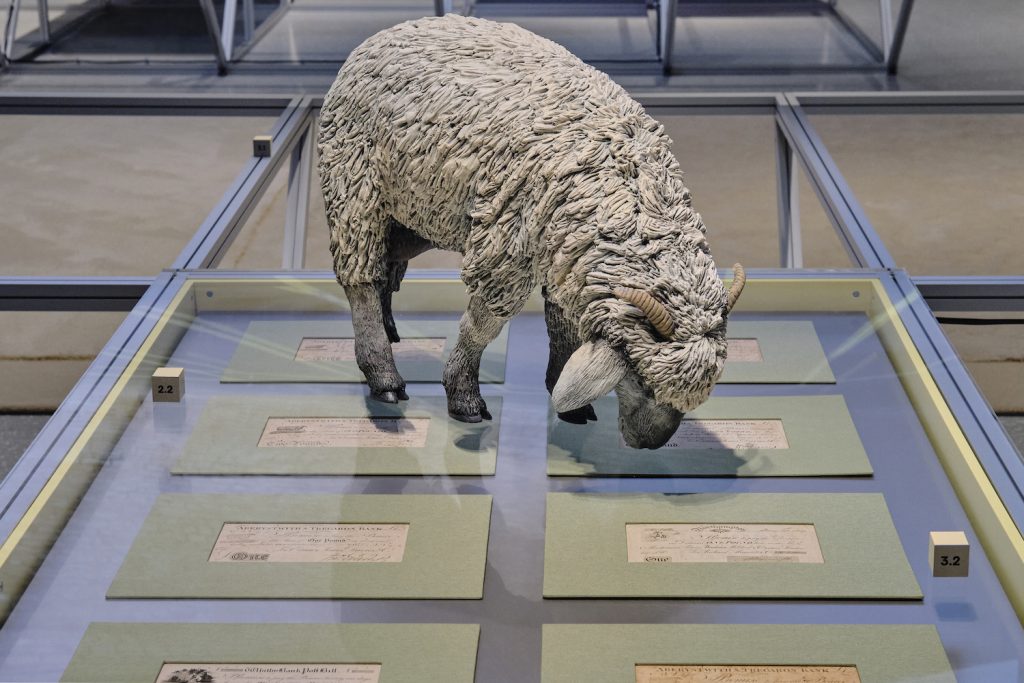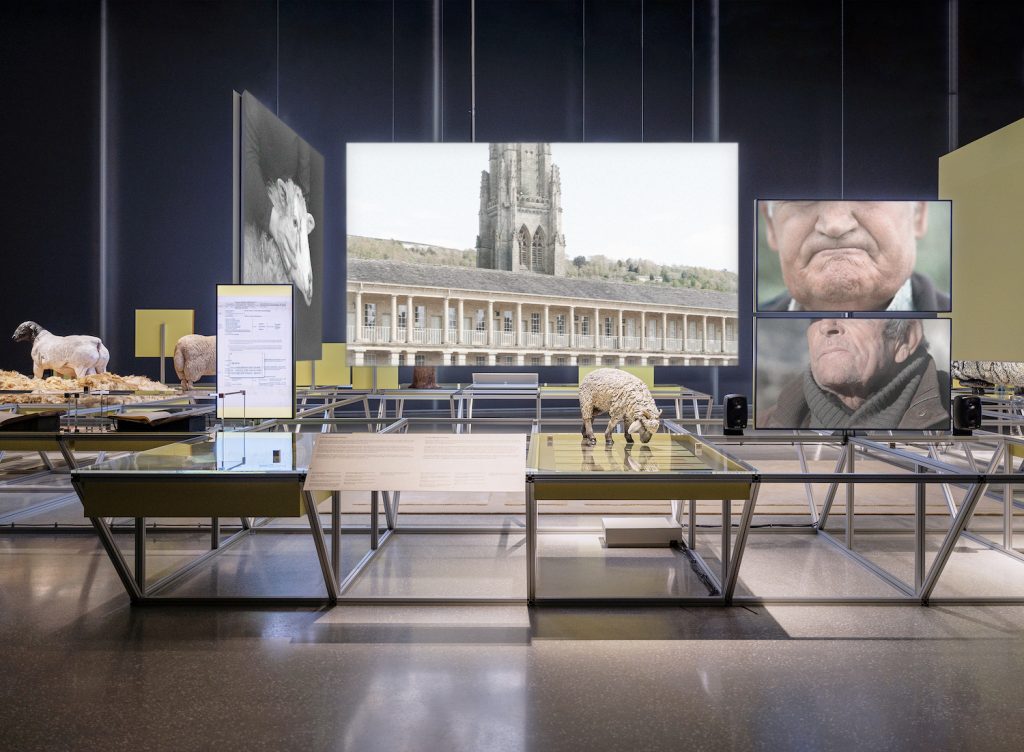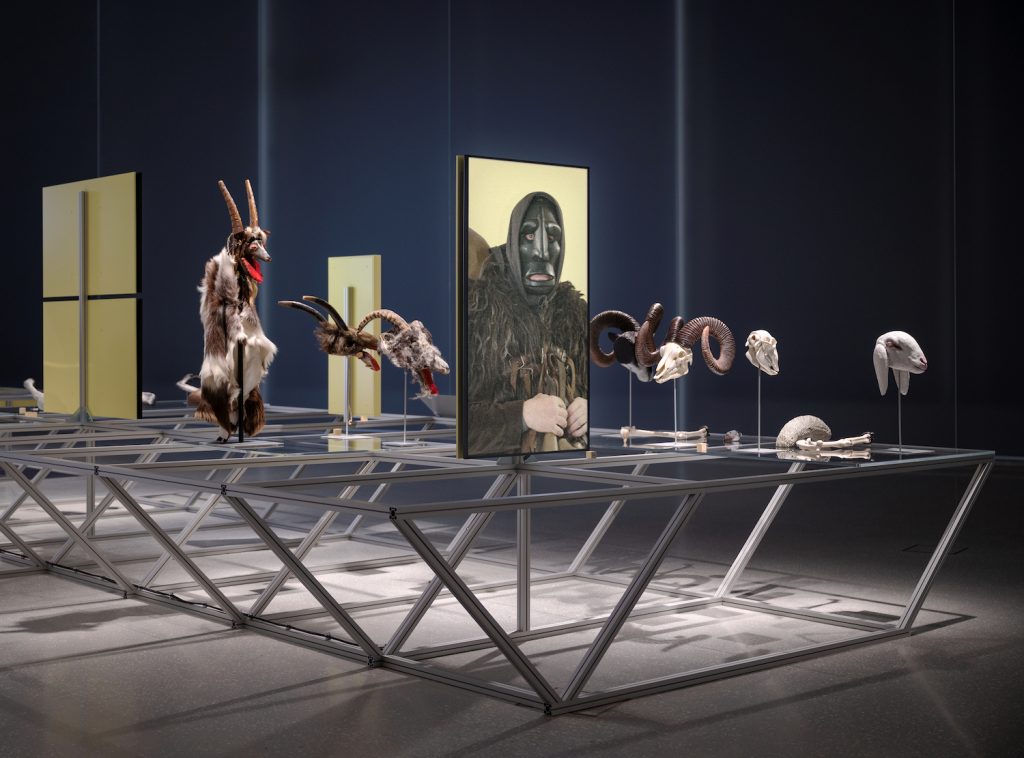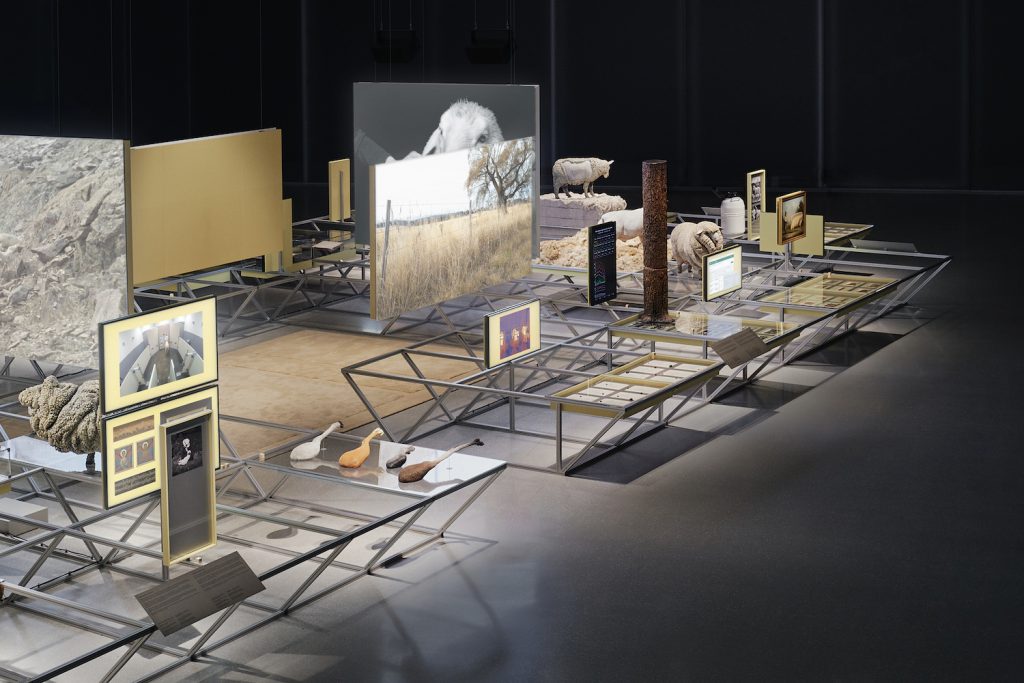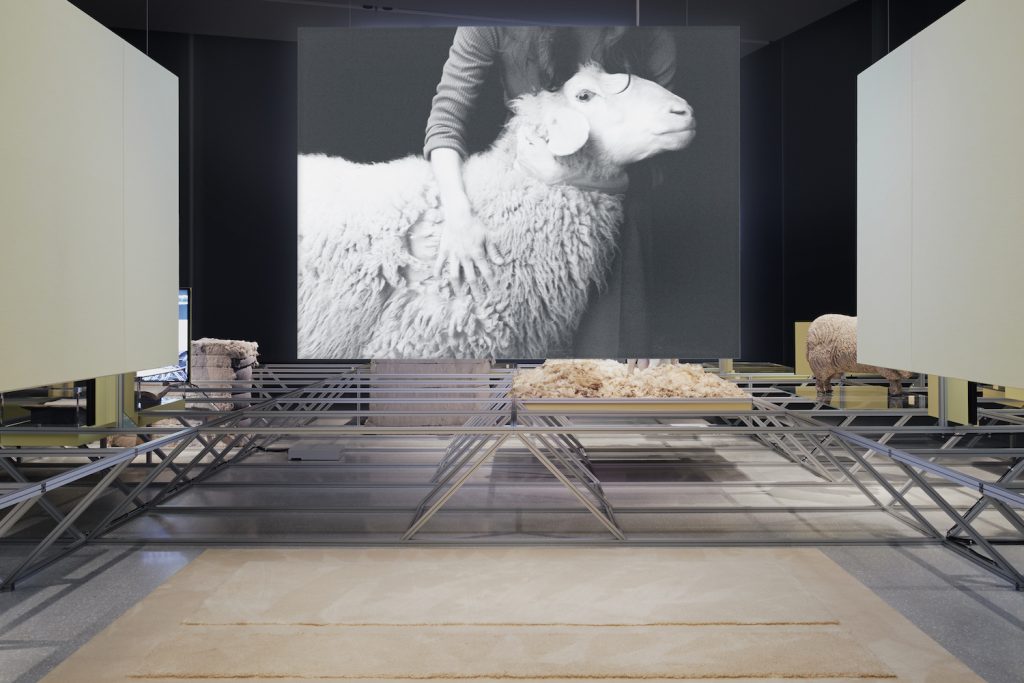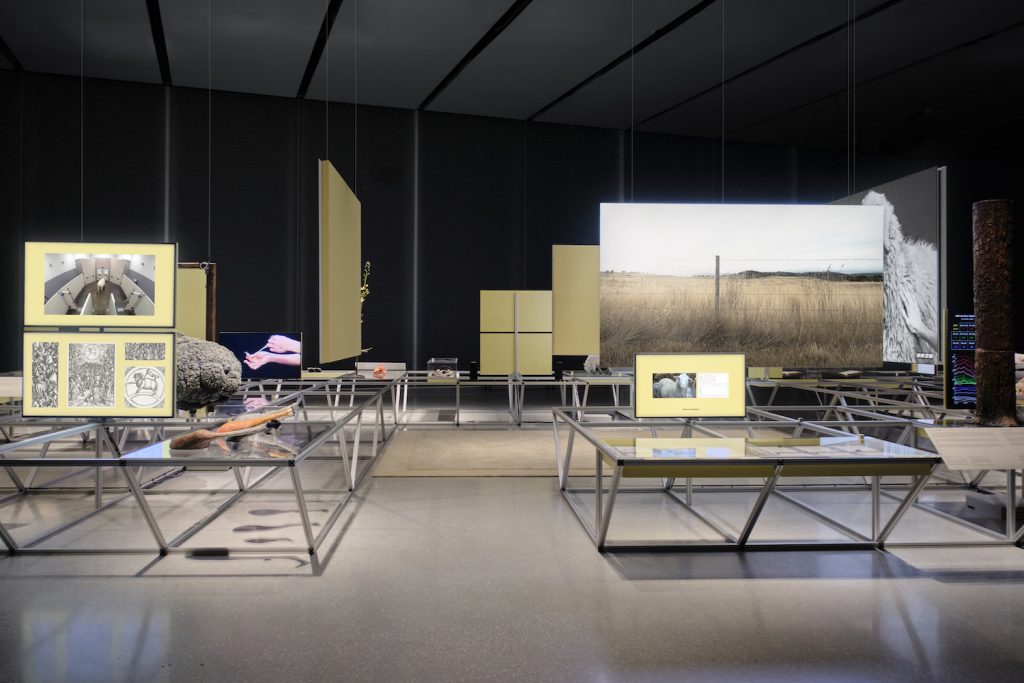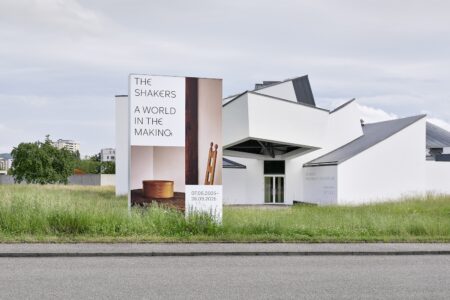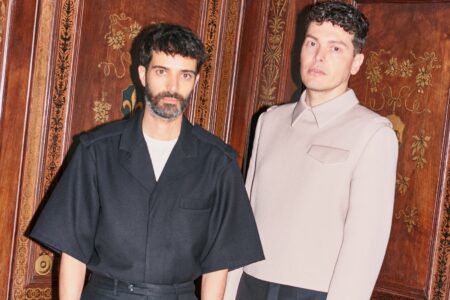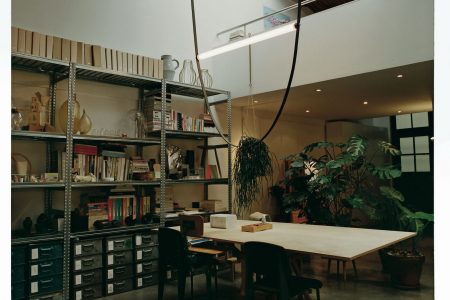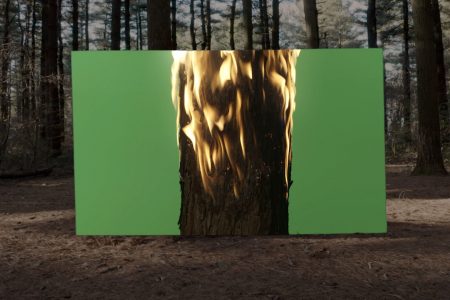Formafantasma: Oltre Terre
Oltre Terra is an ongoing investigation conducted by Formafantasma focused on the history, ecology, and global dynamics of the production and distribution of wool products and sheep farming. A new exhibition is on view at the National Museum of Oslo through October 1st.
Oltre Terra is a design exhibition that investigates the development of the extraction, production and distribution of wool products in relation to the biological evolution of sheep. Commissioned by the National Museum of Oslo, and curated by Hanne Eide, the exhibition is conceived by Formafantasma and forms part of an ongoing research project by the designers on this subject.
As with Cambio, their 2020 exhibition at the Serpentine in London that examined the practices of the global timber industry through comprehensive research, design thinking, conversations and collaborations, Oltre Terre opens up the history of sheep domestication and how it has come to inform our current lifestyles, from food to clothing to landscape. In a ‘what came first, the chicken or the egg’ situation, Formafantasma brings to light the relationship between humans and sheep as having a similar, co-dependent way: “Rather, a complex co-evolution has taken place: if mankind transformed sheep biologically, through domestication and selective breeding, sheep have in turn powerfully shaped the course of human history by providing wool, nourishment and guidance in territorial exploration, thanks to the practice of transhumance. Oltre Terre comes from the etymology of the word transhumance, a combination of the Latin words trans (across, “oltre” in Italian) and humus (grounds, “terra”). This concept is related to the traditional practices of moving livestock to different grazing grounds depending on the season and the nutrients and resources available.
Formafantasma’s immersive and in-depth approach to exhibition-making is seen in its unique installation. The exhibition design is a critical take on the diorama seen in traditional natural history museums, but in this case, appropriately, it has been exploded or let’s say, opened up to reveal objects and items in a new and almost provocative way.
Consisting of eight different sections, the exhibition includes design objects, a 1,700-year-old tunic, goat masks, six life-size reproductions of different sheep breeds, as well as documents, films, by-products of production processes and various types of organic matter. Through this overlap and presentation of materials, techniques and media, the designers “are breaking down the current categorisations that separate human and animal, product and biological matter.” Philosopher, Emanuele Coccia, has written in-depth captions that offer an interpretation of these heterogenous materials and their interconnections.
The exhibition is anchored by a poignant film by artist Joanna Piotrowska and Formafantasma titled Tactile Affernts. The film focuses “on the sense of touch to explore ideas around co-domestication, which is presented simultaneously as an expression of interspecies tenderness and love, and as a form of violence.”
A large wool carpet produced by cc-tapis and made of four different wool fibres from twelve “rustic” Italian sheep breeds whose wool has been considered low-grade due to its coarseness, demonstrates real possibilities of using this ‘lesser quality’ wool in aesthetic and useful ways.
Among the eight sections or thematic concepts are: Section 2: ‘We all need other species to live,’ which reflects on co-domestication between various species from plants to shepherd dogs to devices such as sheep bells and whistles; or Section 7: ‘We can only save our loved ones’ that considers the idea of human exceptionalism which has dominated western philosophy for centuries and affected the attitude of humans towards animals. But also, “There are, however, countless examples of how folklore and mythology often depict the relationship between humans and animals as complex and intertwined, rather than detached. Many cultures have traditions that blur the boundaries between human and nonhuman animals, from folk animal masks and dances to trans-species breastfeeding, emphasizing the deep connections and dependencies between different species.”
Curator Hanne Eide states, “Oltre Terra is a truly collaborative effort and first of all, I must say that this project would never have been realized without the precursor Cambio, initiated by the Serpentine Gallery and curated by Rebecca Lewin. The success of this project and its impact in the design field at large acted as a very important institutional precedent that allowed me to suggest a similar researched based arrangement here at Nasjonalmuseet. On a very basic level, the overall vision was to allow for Formafantasma to use their design knowledge, skills and creativity to do something that does need to adhere to the demands of the market. There is so much creativity in the design field that has enormous potential and value for real world problems and it’s most pressing needs. Museums have a huge responsibility here in offering and allowing time and resources to explore this. With Oltre Terre, a very important starting point from a curatorial perspective was for it to be a design show that would tap into the current debate on post-humanism and the rights of nature movement and that would use storytelling as a way to do it.”
Oltre Terre is both educational and inspirational as an exhibition and research project. Pushing forward the idea of looking locally and rethinking our relationship to animals and natural materials and to consider how new industries and ideas can be generated from these fundamental resources feels so in tune with where we should be focusing our energy as a culture and within communities.
A catalogue published by Buchhandlung Walther König and designed by Studio Joost Grootens has been produced for the exhibition. Oltre Terre is on view at the National Museum of Oslo from May 26 – October 1, 2023.
@formafantasma
www.oltreterra.website
ww.nasjonalmuseet.no
@nasjonalmuseet
